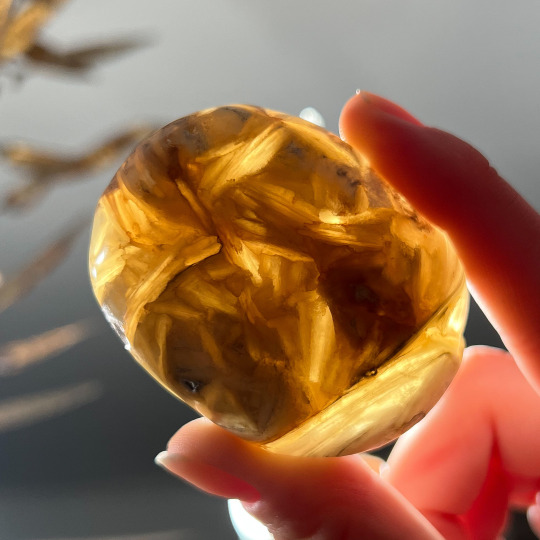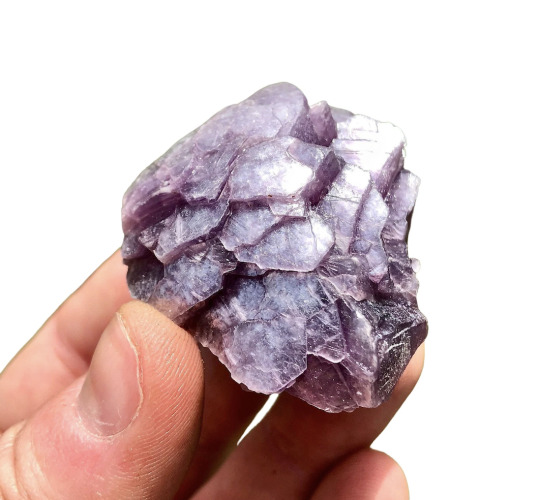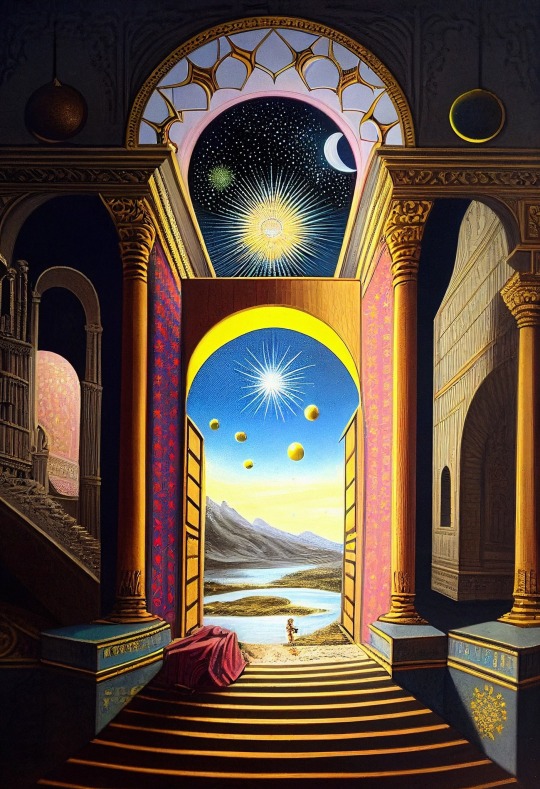#Muscovite mica
Explore tagged Tumblr posts
Text




Muscovite thin section from mineralogy lab today
#not the best pictures lol but I thought they were really gorgeous#geology#minerals#muscovite#mica#Muscovite mica#mineral#mineralogy#geologist#thin section
304 notes
·
View notes
Text
Giving Thanks for Being Present
Those who know me know how excited I was to wake to snow. So excited in fact, that I awoke early, saw that certain glow in the sky through the window above our bed, and jumped up, not wanting to miss the day dawning. At just before 6am, I turned on an outside light for a minute and opened the door to receive the quiet that the flakes created. It snowed for a couple more hours before turning to…

View On WordPress
0 notes
Text

Muscovite with an interesting habit.
From the Museum of Geosciences of the University of São Paulo, Brazil.
83 notes
·
View notes
Text
The most common minerals on Earth encompass a wide variety of geological environments and include quartz, feldspar (both potassium and plagioclase varieties), mica (like muscovite and biotite), calcite, dolomite, olivine, pyroxene, amphibole (
43 notes
·
View notes
Text

Ultra Shiny Silver Muscovite Stone From The West Of Ireland
This is a really nice muscovite mica schist stone I have for sale in my store at the moment :)
It's a stunning gem found in an enchanted mountain stream. With its striking metallic luster, this piece captures light in a way that's capivating beyond words. Muscovite is renowned not only for its beauty but also for its powerful spiritual properties. Believed to enhance intuition, promote emotional balance, and aid in communication, this stone can be a valuable ally on your spiritual journey.
What is Muscovite Schist?
Muscovite schist is a type of metamorphic rock that is primarily composed of muscovite, a silicate mineral known for its shiny, reflective qualities. Schist forms under high pressure and temperature conditions, causing the minerals within it to realign and create a foliated texture, which means the rock has distinct layers or bands.
In muscovite mica schist, the presence of muscovite gives the rock its characteristic metallic sheen and can often result in a beautiful array of colours, ranging from silver to grey and even greenish hues. This rock is often used in various applications, including the creation of jewellery due to its aesthetic appeal.
If you'd like this stone, it can be purchased here :)
Have a lovely day!
#crystal healing#crystal shop#crystals#etsyseller#etsyshop#etsystore#reiki#reikienergy#reikihealing#muscovite#mica#schist#geology#metamorphic#rocks and minerals#rocks#rock hounding#rock collection#rock shop#mineral collection#minerals#crystal collection#silver#metallic#mountains
8 notes
·
View notes
Text


fuchsite aka muscovite/chrome mica
#stopdoopyphotos#rocks#minerals#crystals#fuchsite#green muscovite#chrome mica#sparkly rock#stopdoopy#from Wiggle Room in olympia washington#green rock
14 notes
·
View notes
Text


Reblog if you love translucent stones!! These Yellow Muscovite have my 💛
#crystals#crystalshop#crystal witch#crystal#witchy#aesthetic#witchlife#witchyvibes#witch aesthetic#vibes#yellowmuscovite#mica#muscovite#yellowlepidolite#palmstone#palmstones#meditation#meditation stone#crystal collection#flashycrystal#rarecrystals#reikihealing#reiki crystals#witchythings#tarot witch#crystal community#crystalsofinstagram#witches of tumblr#crystal healing#chakrahealing
7 notes
·
View notes
Text

Found this lovely penny-sized chunk of muscovite mica by Keystone, CO while on vacation. just sitting on top of a dirt pile, looking pretty and shiny
7 notes
·
View notes
Text
Crystals for Apollo
Hello tumblr witches, wizards, Druids, and magical beings! I’m starting a new series today entitled “crystals of the gods”. I am a geologist and have been collecting minerals and gems for over 15 years, and seeing as how intrinsically connected to divinity and magick crystals are, I thought I’d look into what crystals are representative of the many gods and goddesses across the worlds pantheons. For my first post, I want to try and represent a god that although I do not personally worship yet, I am in awe of: Apollo/Apollon. Let’s begin!

• Citrine
Citrine is a gemstone of wealth and positivity, and nobody meets that standard in my eyes like Apollo does! They are full of joy and character, and shine like a beacon of yellow light that citrine encompasses so well.
• Brucite
A bit of a lesser known, but gorgeous mineral, brucites Scalenohedral crystal habit reminds me of the radiance of the sun! And it’s unbeatable bright yellow color is emblematic of Apollo’s connection to the lemon like color it holds, which facilitates much joy and pride in oneself.
• Pyrite
A mineral of subtle, but positive arrogance, and a touch of pride, pyrite might be called fools gold, but it’s not foolish at all! It’s incredible natural geometry is full of the character that Apollo radiates, and it’s literal reflective properties are a perfect metaphor for how the god represents hubris, but also character and personality that makes him so unique and adored!
• Muscovite
This powerfully flashy gem, a variety of Mica, is emblematic of Apollo’s more sensitive side that is often portrayed so beautifully, and often encompassed in acts of homosexuality. Muscovite is soft, only a 2-2.5 on the MOHS scale, but that’s not a negative thing! it’s color, and it’s personality, is among the strongest gold there is!
• Scapolite
Sharp and shiny, scapolite is the perfect stone for a glossy, muscular god like Apollo. It’s yellow hues are bold and sharp, and represent his strength in battle.
• Heliodor
Named after the archetypal god of whom he is a cultural descendant of, Helios, heliodor is the definite stone of the sun, and an ancient symbol of Apollo. Beryl was prized as a luxury to the ancient Greeks and Phoenicians, and heliodor was quite rare, this is an extravagant gift that he will surely be in awe of!
• Sunstone
This should be a no-brainer, but sunstone, a species of plagioclase feldspar, is somehow even more sunny than heliodor. It’s iridescent flakes of color remind one of the divinity of the sun, and it’s epithet, Apollo. Every Apollo devotee should offer the god some sunstone if they can get their hands on it!
• Amber
Warm and joyous, amber is perfect for Apollo. It’s honey like appearance, and beautiful deep warmth evokes Apollos radiance and pride. It is ancient, like they themself, and is a perfect idol of a god of sun!
• Topaz
Orange or imperial topaz, mined in the deserts of Utah and northern Mexico under a constant sun, is the domain of Apollo! It’s juicy colors are bold and rich, and remind one of Apollo’s intense personality.
• Peridot
Beloved by Cleopatra, mistaken by her for emeralds, peridot is like the spicier, more masculine version of emerald culturally. Often found in metamorphic rock around historically active volcanic sites, it’s no wonder that Apollo is attributed to its hot and spicy nature.
• Pyromorphite
In Greek mythology, Apollo was the slayer of Python, a massive serpent whom he dispatched of in a show of strength in Delphi. Pyromorphite, with its hopper like crystal structure resembling that of snake skin, paired with its serpentine color, is a great symbol of this historic accomplishment of the great Apollo!
• Tremolite
Similarly to pyromorphite, tremolites electric green color brings serpentine energy to a shrine dedicated to Apollo, and its a rare stone that feels like a perfect symbol to his awesome strength and power!
Well, there’s a good place to start! What crystals do YOU associated with Apollo?
#green witch#hellenic worship#hellenism#paganism#pagan witch#baby witch#celtic paganism#druidism#male witch#witchcraft#apollo#apollon deity#deity worship#geology#crystals#crystal witch#offerings#altars
42 notes
·
View notes
Text

Spessartine Garnet Crystals and Muscovite Mica on Albite, Shigar Valley, Gilgit-Baltistan, Pakistan
#crystals#crystalhealing#minerals#mineralspecimens#mineralspecimen#garnets#garnetcrystal#spessartinegarnet#spessartine
25 notes
·
View notes
Text




So, I managed to find this little beauty!
It’s a really cool aquamarine specimen, with black tourmaline needles inside it, sitting on some muscovite mica and (I’m pretty sure) colorless fluorite.
It was in a display case with some other specimens with prices in the high hundreds to low thousands of dollars, so I was afraid to ask what this one cost. I couldn’t believe her when she said it was only $75.
Time to get my rocks off
The local mineral club is having their annual Rock, Mineral, and Gem show again! I can't wait to go see what I can find...
33 notes
·
View notes
Text
Materials scientists can now use insight from a very common mineral and well-established earthquake and avalanche statistics to quantify how hostile environmental interactions may impact the degradation and failure of materials used for advanced solar panels, geological carbon sequestration and infrastructure such as buildings, roads and bridges. The new study, led by the University of Illinois Urbana-Champaign in collaboration with Sandia National Laboratories and Bucknell University, shows that the amount of deformation caused by stress applied locally to the surface of muscovite mica is controlled by the physical condition of the mineral's surface and follows the same statistical dynamics observed in earthquakes and avalanches. The study findings are published in the journal Nature Communications.
Read more.
#Materials Science#Science#Minerals#Muscovite#Strength of materials#Earthquakes#Deformation mechanisms#Stress and strain#University of Illinois
10 notes
·
View notes
Text
Presenting here a beautiful specimen of pink Apatite combine with Muscovite mica . From Sumayar valley, Nagar district, Pakistan.
🎥your__minerals Shoukat Khan
204 notes
·
View notes
Text
Mineral Swag Round 3: Imagine the Collab Between These Two


Larimar is a variety of the mineral pectolite and is often a light blue color. Most larimar is found in the Caribbean, especially the Dominican Republic, and the blue color will permanently fade with sun exposure!
Lepidolite is a purple or pink lithium-bearing mica, so it has one direction of cleavage and this beautiful lavender color. However, the lithium is not what causes these colors! Manganese causes these colors. Another mica, muscovite, is also still in the competition!
These minerals are just really pretty colors. Especially together. The light blue and lavender is a good combo. But uh, fight to the death!
151 notes
·
View notes
Text






#stopdoopyphotos#2019 nov 9 puyallup rock and gem fair#seraphine#tigers eye#aura quartz#quartz#heat treated#heat treated quartz#amethyst#fuchsite#green muscovite#chrome mica#green mica#mica#lodolite quartz#lodolite#hematite#green zebra jasper#zebra jasper#green jasper#jasper#fluorite#purple fluorite#green fluorite#rainbow fluorite#blue apatite#apatite#celestite#minerals#rocks
3 notes
·
View notes
Text

Planet Mercury: Correspondences, Magick & Astrology
Mercury is the planet closest to the sun in our solar system. It is also the smallest planet in the solar system, assuming you accept Pluto’s recent demotion to dwarf planet.
Mercury orbits the sun once every 88 days. It is bright, but difficult to see because of its proximity to the sun. Look for it in the morning and evening twilight.
The earliest known mention of Mercury is in an astrological compendium dating from 14th Cen BCE Assyria known as the MUL.APIN tablets.
The Babylonians called Mercury Nabu, after their messenger God.
The ancient Greeks called Mercury Stilbon, meaning ”the gleaming” and later called it Apollo when it appeared in the morning sky and Hermes when it appeared in the evening sky.
The name Mercury was given to the planet by the Romans who associated their messenger God, Mercury, with the Greek Hermes.
The Planet Mercury in Magic
The planet Mercury rules communication, information and networking, travel, trade, merchants, and commerce. Mercury rules Gemini and Wednesday.
Herbs Associated with Mercury Almond Alyssum Anise Crocus Fennel Hazel Heather Honeysuckle Lavender Marjoram Mullein Parsley Pelargonium Southernwood
Mercury Minerals and Crystals Agate Aventurine Citrine Mercury Mica Muscovite
Other Mercury Correspondences
Colors: Yellow, violet, orange
Other symbols: Wings, feathers, reflective surfaces
Celestial Alchemy by Talon Abraxas
25 notes
·
View notes